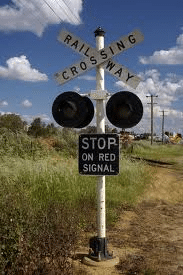If you are like me, you have agonized over choosing the perfect early childhood classroom to care for your child as you head back to work. My children are grown now but I clearly remember as a young mother, feeling that the future success of my child hung on the nursery school class I chose. I checked up on the certifications and experience of the staff. I examined the curriculum and daily schedule. I inspected the room for safety flaws and looked for any indication of less than cleanly equipment. I certainly expected a higher standard of the Centers and Schools than I maintained in my own home and my own parenting!
It is curious, though, that I never thought to ask about the place of music in the early childhood environment. After all, that is the business I’m in. In the years since, I have had many opportunities to visit day care centers, early childhood schools and early learning programs. So to add to your checklist when choosing your child’s day care, nursery school or preschool, here are some thoughts about the Do’s and Don’ts of music in early childhood environments.
Quality early learning environments:
DO have active, participatory music making as part of the day. This could be singing songs, playing instruments or moving and dancing to music.
DO have staff members who are comfortable making music with children and who are knowledgeable about music development.
DO use live and recorded music that is developmentally appropriate. Equipment to play recorded music provides a pleasing sound quality.
DO vary the acoustic environment. Recorded music, live music making, talking, and silence are all incorporated throughout the day.
Quality early learning environments:
DO NOT have music playing continuously in the background. Constant recorded music can become like ‘wallpaper’. The children will no longer notice or value it, and the sounds can increase the noise level and perhaps contribute to stress.
DO NOT use music that is not developmentally appropriate. This includes not playing most popular radio stations. Adult music will frequently have lyrics that are not supportive of early childhood learning. Loud dynamics and fast tempos will influence children’s level of activity and might further dysregulation.
DO NOT limit or contain the children’s music making to rote or habitual responses. This means that staff will need to know musical development and accept and celebrate musical creativity.
DO NOT dismiss the importance of music as a valuable part of every child’s life.
Best of luck with the new school year. As always, I welcome your comments and questions.
Beth
P.S. My children seemed to have turned out just fine 😉



As an ECE Consultant I am often in ECE classrooms and find it distracting when the CD is playing a song and then the caregiver starts singing a completely different song to the children. Then is sounds like the CD and the caregiver’s voice are competing with each other. Why do we do that to children?
Thank you for a well written article about the importance of music in early childhood education programs. So many teachers don’t feel competent to provide a quality music experience. Part of their education must include basic music activities. Everyone can offer music experiences, even without extensive knowledge or musical talent.